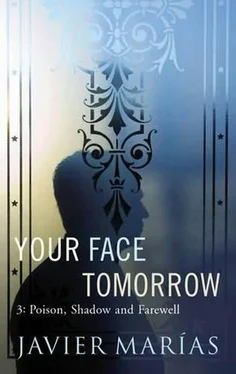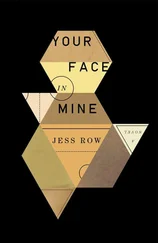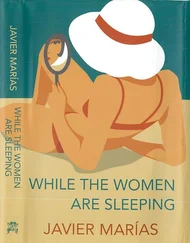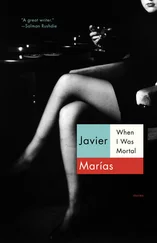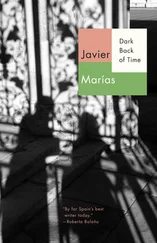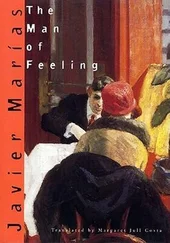'Pedro Maria Rossi, Count of San Secondo. 1533-35,' said the label and then went on to describe him: "Pedro Maria Rossi (1504-1547) was a brilliant soldier who served under Francis I of France, Cosimo I de' Medici and Charles V ('So he was a mercenary in other words,' I thought, 'as I am, too, in my own way'). 'The portrait was painted when he was fighting under the imperial flag, which explains the inclusion of the word "imperio" and the many classical quotations.' The Count's blue-grey gaze was even colder than that of his wife, almost scornful, almost steely
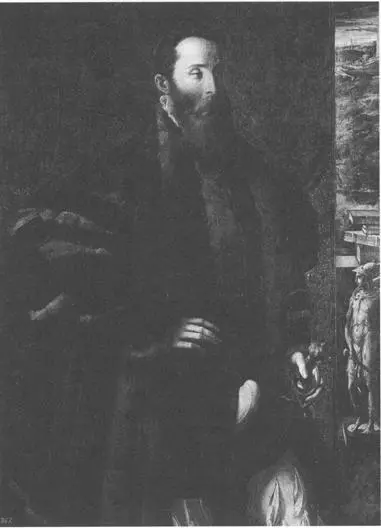
and almost cruel, although it was harder to imagine that he was directing it at her than that she was directing hers at him. ('He could be Sir Cruelty,' I thought.) The long beard and mustache made him seem older (he would only have been about thirty when he posed for the portrait) and made it hard to know at first glance whether he was good-looking or merely elegant and severe, a second glance revealed that he certainly was (all three things, I mean). His noble nose was quite large, larger than mine but not as large as Custardoy's, which was, moreover, slightly hooked. Like St. Catharine and Reresby, he wore a sword, on his left side (which meant that he must be right-handed), but his sword was sheathed and you could only see the hilt and the guard, not the blade. He was wearing a fine costume trimmed with fur, and to his right was a statue of a helmeted youth also carrying a sword, presumably the god Mars. The Count had distinguished hands, with fingers that seemed too slender to be those of a warrior. But pretty much the most striking thing about him was the aggressive codpiece, seamed or stitched or whatever you call it (it must have been made of hard leather, not of reeds or wicker as they appear in most paintings), visibly and obscenely pointing upwards-a permanent reminder of his erection-far less discreet and modest, for example, than those worn by Emperor CharlesV and Philip II in the full-length portraits, both by Titian, in the same museum. 'Perhaps this Count, this soldier, this husband, isn't like me at all,' I thought, 'the one who's leaving or has left, but like the one who is about to arrive or has arrived already and is a violent man who carries a sword, like that bastard Custardoy. Perhaps his wife's gaze then is one of devotion and fear, which is why she seems paralyzed and will-less, for devotion and fear are such powerful dominant feelings, whether felt simultaneously or separately it doesn't matter, that they can momentarily cancel out all other feelings, even love for one's children. I hope Luisa doesn't look at Custardoy like that, I hope she isn't afraid of him, still less devoted. But precisely how she looks at him is something I will never know'
I again looked away from the portrait and glanced over at Custardoy or at the man who might be Custardoy and I saw that he was also looking in my direction; I was convinced that, for a couple of seconds, our eyes met, but so briefly that it was likely that we had, in fact, each merely glanced simultaneously at the painting that more or less matched the picture we each had before us, I that of Pedro Maria Rossi and he that of Camilla Gonzaga with Troilo, Ippolito and Federico, their children; since I first spotted him, he must have spent at least seven minutes there jotting down words and scribbling lines but he'd doubtless been there longer than that too, and that's a long time to look at a single painting. In that couple of seconds, however, I was able to see his face full on for the first time, and it immediately impressed me as being crude, rough and cold, with its broad forehead or receding hairline, its sparse mustache (dark like his sideburns) and its nose which appeared, as is only logical, less hooked than it had in profile (yes, he did suddenly remind me of a long-haired singer I had seen on television, probably the singer with that group Ketama), and two enormous very dark eyes, rather wide-set and almost lashless, and both those factors, the lack of lashes and the wide-apartness, must have made his obscene gaze unbearable or possibly irresistible when turned on the women he seduced or bought and possibly also when turned on the men with whom he might be competing. They were eyes that grabbed, like hands, and one night or one day, they had alighted on the face and body of Luisa and made her his prey. ('And very strange dark eyes, I can't really describe them, but there's something strange, something peculiar about them that I don't like,' according to the description I had coaxed out of a reluctant Cristina). And so, to give those eyes no time to fix on or grab me, I walked away from my portrait of the Count, retreated a few steps and went into the room next door, to the left and on a slightly higher level (a matter of going up three or four steps). From there I could peer in every thirty seconds or so to make sure Custardoy had not escaped without my realizing, and, at the same time, I was much less likely to re-enter his field of vision. In that first lightning glimpse of his face full on he had reminded me of someone else, not the singer, but someone I knew personally, but it was too brief a glimpse for me to be able to remember who, or if my memory was right.
The next room was dominated largely by German art. It contained Dürer's famous self-portrait, as well as his 'Adam' and his 'Eve.' However, my eye was caught at once by a long narrow painting I had been familiar with since childhood, when, as was only normal, it had shocked and filled me with a degree of fear tinged with curiosity, 'The Three Ages and Death' by Hans Baldung Grien, which, like the two portraits, has its counterpart in another painting of the same format and dimensions next to it, 'Harmony, or The Three Graces.' In the former, Death, on the right, is grasping the arm of an old woman or has his arm linked through hers and is tugging at her gently, unhurriedly, and the old woman, in turn, has one arm round the shoulder of a young woman while with her left hand she's plucking at the younger woman's skimpy raiments, as if she, too, were drawing her softly away. Death is carrying an hourglass in his right hand ('An hourglass figure,' I thought) and in his left hand keeps a loose hold on a spear twice broken (it almost resembles a thun-derless flash of lightning) on whose point falls or rests the hand of a sleeping child who is lying at the feet of that group of three, though it may be a long time until he joins them, and he is quite oblivious to their dealings. To his right, an owl; in the background, a solar landscape that looks instead lunar, grim and desolate, with a ruined tower in flames; the inevitable cross hangs in the sky. I had always wondered, ever since I was a child,
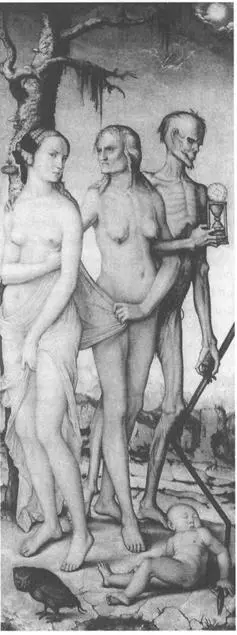
if the young woman and the old were the same person at very different ages or if they were two separate women, I mean, if the older woman had always been tugging at herself from youth onwards and into old age, when she finally allows herself to be carried off by Death, for if that were not the case, the subject would be graver and more troubling. However, the two women looked very alike to me: the blue eyes, the nose, the rather thin lips, the somewhat sharp chin, the long wavy hair, the stature, the smallish widely-spaced breasts, the feet, the whole figure, there were even similarities in their facial expressions, or at least they were not entirely opposed. The young woman is frowning, either worried or annoyed, but not alarmed or frightened, as she probably would have been had the person drawing her away been a stranger, or just another person, or even her mother. She doesn't struggle or put up a fight or try to shrug off the hand on her shoulder, and at most, she tries to prevent her from removing all her garments. The old woman, for her part, focuses all her attention on the young woman and not on Death, and in her look there is a mixture of gravity, understanding, resolve and pity, but no ill will, as if she were saying to the young woman (or to herself when she was her age): 'I'm sorry, but there's nothing we can do' (or 'Come along, we have to go on; I know because I've already arrived'). As for Death, who has his arm linked through hers, she takes no notice of him, but neither does she resist or oppose him, she looks more towards the past than her future, perhaps because-despite the promises of the cross hanging in the air and the infernal tower in flames, with a large hole in the side as if made by a cannon ball-she knows that there is little or no future left.
Читать дальше
